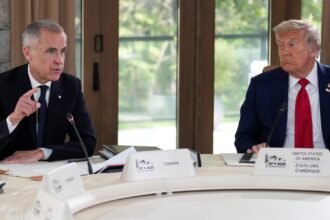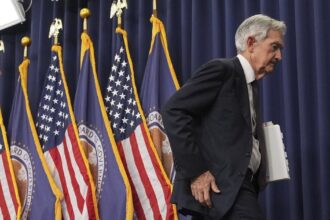The ripple effects of former President Donald Trump’s aggressive tariff policies haven’t fully materialized in Canadian inflation data yet—but economists warn the impact is coming. As supply chains adjust and businesses absorb initial costs, Canadians have been temporarily shielded from price increases that many experts believe are inevitable.
“We’re in the eye of the storm right now,” explains Dr. Elena Richards, senior economist at Canadian Economic Research Institute. “Many businesses have been absorbing tariff costs through existing inventory and contracts negotiated before the tariffs took effect. That buffer is rapidly disappearing.”
Recent data from Statistics Canada shows inflation holding relatively steady at 2.7% annually, but this stability masks underlying pressures building in key sectors most vulnerable to cross-border trade disruptions. Manufacturing inputs have seen wholesale price increases of 8-12% in categories directly affected by the tariffs, according to industry reports from the CO24 Business sector analysis.
The automotive industry stands as perhaps the most visible victim of these policies. With integrated supply chains spanning both sides of the border, manufacturers report component costs rising between 15-22% for parts crossing the border multiple times during production.
“We’ve already implemented three price increases this year,” admits Thomas Henderson, CEO of Ontario-based auto parts manufacturer NorthTech Components. “Eventually, these costs move downstream to dealers and consumers. There’s no magic solution—someone pays for tariffs, and ultimately, it’s regular Canadians.”
Food prices represent another vulnerability. Agricultural products facing tariffs have seen wholesale increases of 6-9% year-over-year, though competitive pressures have kept retail price jumps more modest so far. The CO24 Breaking News team has documented growing concerns from grocery chains about maintaining current pricing models if tariffs persist through harvest season.
Bank of Canada analysts remain particularly concerned about second-order effects. Their models suggest that beyond direct price increases, broader inflationary psychology could take hold if businesses begin preemptively raising prices in anticipation of future trade tensions.
“The real danger isn’t just the mathematical addition to inflation from tariffs—it’s the potential shift in expectations,” warns Dr. Richards. “If businesses and consumers begin expecting persistent inflation, we could see much broader price increases than the tariffs themselves would justify.”
For Canadian consumers, the practical advice from economists remains consistent: expect gradual price increases in sectors heavily dependent on cross-border trade, particularly automotive, electronics, and processed foods. The full inflationary impact could take 8-12 months to fully materialize in consumer prices.
Government response options remain limited. While targeted relief programs for heavily affected industries are under consideration, the fundamental economic reality remains unchanged—tariffs represent a tax that eventually reaches consumers through higher prices.
As CO24 Sports has reported, even recreational equipment faces upward price pressure, with sporting goods manufacturers warning of 10-15% increases for next season’s inventory if current trade tensions persist.
Will Canadian consumers ultimately feel the full weight of these tariffs in their daily shopping? The economic consensus suggests yes—it’s not a question of if, but when.










